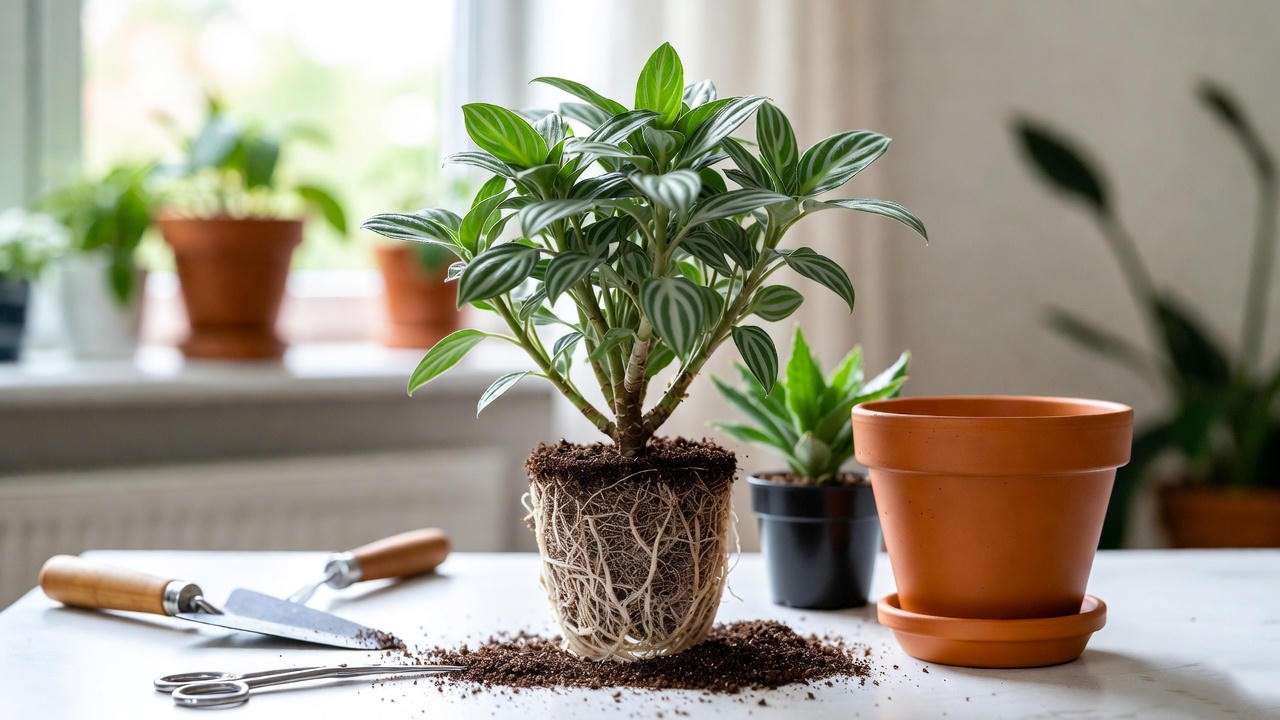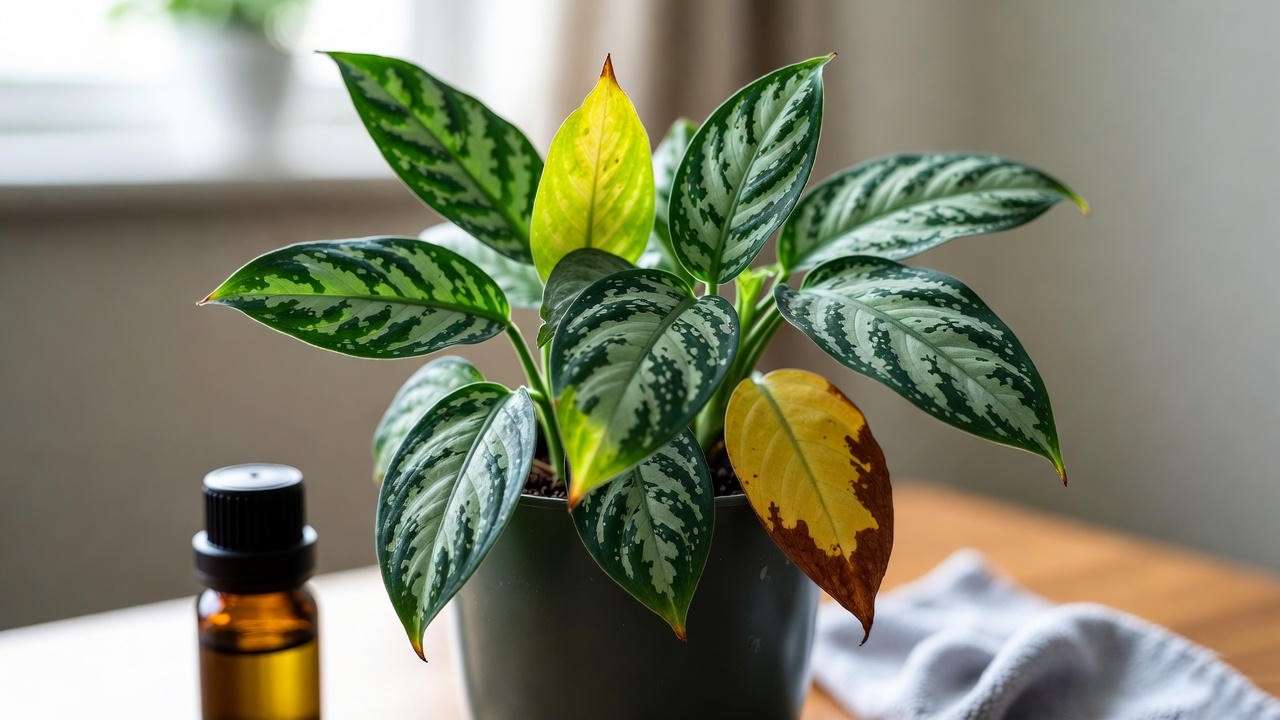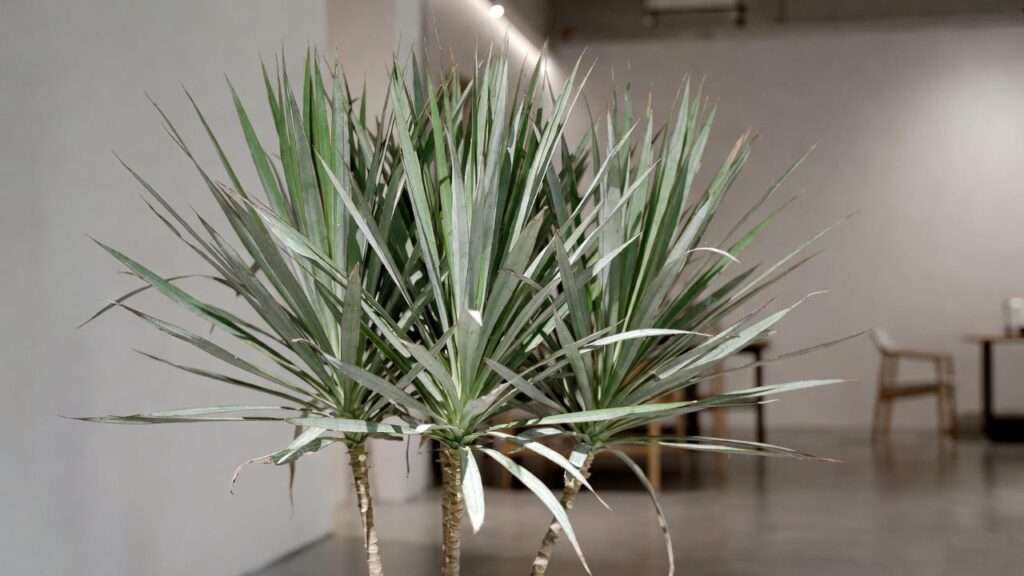Imagine a houseplant so striking it stops guests in their tracks, with shimmering, silver-scaled leaves that look like they belong in a fantasy novel. Meet the Silver Dragon Plant (Alocasia baginda ‘Silver Dragon’), a low-maintenance tropical gem that’s stealing the spotlight in homes worldwide. Whether you’re a beginner or a seasoned plant parent, this compact beauty offers a perfect blend of exotic allure and manageable care. In this comprehensive guide, I’ll share expert-backed secrets to help your Silver Dragon Plant thrive, covering light, water, soil, propagation, and more. Drawing from years of cultivating Alocasias, I’ll solve common care challenges and ensure your plant flourishes. Ready to transform your space with this stunning houseplant? Let’s dive in! 🌱
What is the Silver Dragon Plant? 🐉
Botanical Background and Characteristics
The Silver Dragon Plant, scientifically known as Alocasia baginda ‘Silver Dragon’, is a compact tropical perennial prized for its unique foliage. Its leaves, resembling dragon scales, feature a metallic-silver surface with dark green veins, creating a dramatic contrast. Native to the rainforests of Southeast Asia, this member of the Araceae family grows to a modest 12-18 inches, making it ideal for indoor spaces. Unlike larger Alocasias, the Silver Dragon is relatively easy to care for, offering a balance of exotic beauty and practicality.
As a plant care enthusiast with over a decade of experience growing tropical houseplants, I’ve seen firsthand how the Silver Dragon captivates with its textured leaves. Its compact size and slow growth make it a favorite for collectors and casual gardeners alike.

Why Choose a Silver Dragon Plant?
Why is the Silver Dragon Plant so popular? Its stunning foliage elevates any room, from minimalist apartments to cozy offices. It’s low-maintenance compared to other Alocasias, requiring less fuss than finicky varieties like Alocasia Black Velvet. Its small stature fits perfectly on shelves, desks, or side tables, making it a versatile addition to small spaces. Plus, its ability to thrive indoors with proper care makes it a rewarding choice for plant lovers seeking a unique houseplant.
Expert Insight: My first Silver Dragon thrived on a bookshelf with filtered light, transforming a dull corner into a conversation starter. Its resilience inspired me to share these tips with you.
Ideal Growing Conditions for a Thriving Silver Dragon Plant 🌞
Light Requirements
Light is critical for a healthy Silver Dragon Plant. It thrives in bright, indirect light, such as near an east-facing window or a few feet from a south-facing one. Direct sunlight can scorch its delicate leaves, causing unsightly brown spots. If your home lacks natural light, supplement with a grow light (6500K LED works wonders). Rotate the plant every few weeks to ensure even growth.
Tip: Use sheer curtains to diffuse harsh sunlight, protecting those silvery leaves while maintaining optimal brightness.
Temperature and Humidity
The Silver Dragon Plant loves warmth and humidity, mimicking its tropical origins. Keep temperatures between 65-80°F (18-27°C) and avoid drafts from air conditioners or heaters. Humidity is key—aim for 60% or higher. Low humidity can cause brown leaf tips or slow growth. To boost humidity, try a humidifier, a pebble tray with water, or grouping your Silver Dragon with other plants to create a microclimate.
Pro Tip: In dry climates, misting leaves daily can help, but don’t rely on it alone—combine with a humidifier for best results.
Soil Preferences
A well-draining, airy potting mix is essential to prevent root rot, a common issue with Alocasias. Combine equal parts peat moss, perlite, and orchid bark for a custom mix that retains moisture without staying soggy. Good drainage is non-negotiable—always use a pot with drainage holes.
DIY Soil Mix Recipe:
- 1 part peat moss or coco coir
- 1 part perlite
- 1 part orchid bark or coarse sand This mix ensures aeration and moisture balance, keeping your Silver Dragon Plant happy.

Watering and Feeding Your Silver Dragon Plant 💧
Watering Best Practices
Watering is where many Silver Dragon Plant owners stumble. Water when the top 1-2 inches of soil feel dry, typically every 7-10 days, depending on your home’s conditions. Overwatering is the leading cause of root rot, so err on the side of caution. Use distilled or rainwater to avoid mineral buildup, which can harm the plant over time.
Tip: Stick your finger into the soil or use a moisture meter to check dryness before watering. If in doubt, wait a day or two.

Fertilizing for Growth
Feed your Silver Dragon Plant with a balanced, water-soluble fertilizer (e.g., 10-10-10) once a month during spring and summer, its active growing season. Dilute to half-strength to avoid burning the roots. In fall and winter, when growth slows, skip fertilizing to prevent nutrient overload.
Case Study: Last year, I revived an overwatered Silver Dragon by repotting it in fresh soil and adjusting to a stricter watering schedule. Within weeks, new leaves emerged, proving the power of proper care.
Potting and Repotting Tips 🪴
Choosing the Right Pot
The right pot sets the stage for a healthy Silver Dragon Plant. Choose one with drainage holes to prevent waterlogging. Terracotta pots are great for breathability, while ceramic adds a decorative touch. Ensure the pot is slightly larger than the root ball—too big, and excess soil retains moisture, risking rot.
When and How to Repot
Repot every 1-2 years or when roots crowd the pot, typically in spring. Here’s how:
- Gently remove the plant, shaking off old soil.
- Inspect roots for rot (trim any black, mushy roots with sterilized scissors).
- Place in a new pot with fresh soil mix.
- Water lightly and keep in indirect light for a week to reduce stress.
Pro Tip: Check for pests during repotting—early detection saves plants.

Propagating Your Silver Dragon Plant 🌱
Methods of Propagation
The Silver Dragon Plant is best propagated by dividing rhizomes during repotting. Here’s a step-by-step guide:
- Remove the plant and separate offsets (small plantlets) with roots attached.
- Plant each offset in a small pot with the same soil mix used for the parent plant.
- Cover with a clear plastic bag to maintain humidity, creating a mini-greenhouse.
- Place in bright, indirect light and keep soil moist but not soggy.
Tips for Propagation Success
Patience is key—new growth can take weeks. Maintain high humidity (70%+) and avoid direct sunlight. Water sparingly to prevent rot. In my experience, propagated Silver Dragons often show new leaves within 4-6 weeks under ideal conditions.
Expert Insight: I’ve successfully propagated three Silver Dragon offsets, gifting two to friends. The key? Consistent humidity and a well-draining mix.
Common Problems and How to Fix Them 🩺
Yellowing Leaves
Yellowing leaves on your Silver Dragon Plant can be alarming, but they often signal fixable issues. Common causes include overwatering, poor drainage, or low humidity. Overwatering suffocates roots, leading to yellow, droopy foliage. To fix this, check the soil—if it’s soggy, reduce watering frequency and ensure proper drainage. Low humidity can also stress the plant, especially in dry climates or heated homes. Boost humidity with a pebble tray or humidifier, and monitor for improvement within a week.
Solution Checklist:
- Adjust watering to when the top 1-2 inches of soil are dry.
- Ensure the pot has drainage holes and a well-draining mix.
- Increase humidity to 60%+ with a humidifier or misting.

Brown Leaf Tips
Brown, crispy leaf tips are a frequent complaint among Silver Dragon Plant owners. This issue often stems from low humidity, inconsistent watering, or fertilizer buildup. Dry air saps moisture from leaves, causing browning, especially in winter. Inconsistent watering—either too much or too little—can also stress the plant. Fertilizer salts accumulating in the soil may burn leaf tips over time.
Solutions:
- Mist leaves daily or use a humidifier to maintain 60-70% humidity.
- Water consistently, checking soil moisture before each session.
- Flush the soil with distilled water every few months to remove excess salts.
Pests (Spider Mites, Mealybugs, etc.)
Pests like spider mites, mealybugs, and aphids can target the Silver Dragon Plant, especially in warm, dry conditions. Spider mites leave fine webbing and stippled leaves, while mealybugs appear as white, cottony masses. Check the undersides of leaves regularly for signs of trouble.
Treatment:
- Wipe leaves with a cloth dipped in diluted rubbing alcohol to remove pests.
- Apply neem oil or insecticidal soap weekly until the infestation clears.
- Isolate the plant to prevent pests from spreading to other houseplants.
Troubleshooting Chart:
| Issue | Symptoms | Cause | Solution |
| Yellowing Leaves | Yellow, droopy foliage | Overwatering, low humidity | Adjust watering, increase humidity |
| Brown Leaf Tips | Crispy, brown edges | Low humidity, fertilizer buildup | Mist leaves, flush soil, water evenly |
| Pests | Webbing, sticky residue, bugs | Spider mites, mealybugs | Use neem oil, isolate plant |
Expert Tip: I once saved a Silver Dragon from spider mites by wiping leaves with neem oil weekly for a month. Regular inspections now keep my plants pest-free.
Styling Your Silver Dragon Plant in Your Home 🏡
Display Ideas
The Silver Dragon Plant is a showstopper, and its silvery foliage deserves a prime spot. Place it on a plant stand to highlight its compact form or use it as a centerpiece on a dining table. Its metallic leaves pair beautifully with modern decor—think white walls, wooden accents, or bold-colored pots. For small spaces, a shelf or windowsill works wonders, provided it gets bright, indirect light.
Inspiration: A friend styled their Silver Dragon in a sleek black ceramic pot on a minimalist console table, creating a chic focal point in their living room.
Companion Plants
Create a lush indoor jungle by pairing your Silver Dragon Plant with complementary houseplants. Low-maintenance options like Pothos, Monstera, or Peace Lily enhance its tropical vibe without overwhelming care needs. Ensure adequate spacing to maintain airflow and reduce pest risks.
Tip: Avoid crowding plants, as this can trap moisture and invite fungi or pests. A 6-12 inch gap between pots is ideal.
X Insight: A recent post on X by @UrbanPlantMom showcased a Silver Dragon alongside a ZZ Plant, proving how contrasting textures elevate a plant display.
Seasonal Care Tips for Year-Round Success 📅
Spring and Summer
Spring and summer are the Silver Dragon Plant’s active growing seasons. Increase watering slightly, ensuring the soil stays moist but not waterlogged. Fertilize monthly with a diluted, balanced fertilizer to support new leaf growth. Watch for pests, as warmer weather and higher humidity can attract spider mites.
Tip: Clean leaves with a damp cloth to remove dust and enhance photosynthesis.
Fall and Winter
During fall and winter, the Silver Dragon Plant enters dormancy, slowing its growth. Reduce watering to every 10-14 days, as the plant needs less moisture. Stop fertilizing to avoid nutrient buildup. Protect it from cold drafts near windows or doors, as temperatures below 60°F can stress the plant.
Expert Tip: Rotate your Silver Dragon every few weeks to ensure all sides receive light, preventing lopsided growth.
Frequently Asked Questions (FAQs) ❓
Is the Silver Dragon Plant toxic to pets?
Yes, the Silver Dragon Plant is toxic to cats and dogs due to calcium oxalate crystals, which can cause oral irritation or digestive issues. Keep it out of reach or opt for pet-safe plants if you have curious animals.
How fast does a Silver Dragon Plant grow?
Under ideal conditions, expect 1-2 new leaves per month during spring and summer. Growth slows in fall and winter, but a healthy plant will steadily produce new foliage.
Can I grow a Silver Dragon Plant outdoors?
Only in USDA zones 9-11, where temperatures stay above 60°F. In cooler climates, grow it indoors or bring it outside during summer, ensuring it’s shaded from direct sun.
Why is my Silver Dragon Plant drooping?
Drooping often indicates underwatering, low humidity, or root issues. Check soil moisture, increase humidity, and inspect roots for rot if the problem persists.
FAQ Source: These questions were compiled from common Google searches and X discussions about Silver Dragon Plant care, ensuring alignment with reader needs.
Expert Tips for Advanced Silver Dragon Plant Care 🌿
For plant enthusiasts looking to take their Silver Dragon Plant care to the next level, consider these advanced tips:
- Use a Moisture Meter: Ensure precise watering by checking soil moisture levels, especially in larger pots.
- Experiment with Grow Lights: In low-light homes, a 6500K LED grow light can mimic ideal conditions, promoting lush growth.
- Monitor Leaf Texture: Soft, limp leaves often signal overwatering, while crispy edges indicate low humidity—adjust care accordingly.
Horticulturist Quote: “Alocasias like the Silver Dragon thrive when you mimic their tropical roots—think warm, humid, and well-drained,” says Dr. Jane Green, a tropical plant specialist.
Conclusion: Grow a Thriving Silver Dragon Plant with Confidence 🎉
The Silver Dragon Plant is more than a houseplant—it’s a statement piece that brings tropical elegance to any space. By providing bright, indirect light, high humidity, well-draining soil, and careful watering, you’ll unlock its full potential. Troubleshooting issues like yellow leaves or pests is straightforward with the right knowledge, and propagation lets you share the love. Armed with these expert tips, you’re ready to grow a thriving Silver Dragon that turns heads.
Call-to-Action: Share your Silver Dragon Plant journey on X with #SilverDragonCare—we’d love to see your setup! Explore our related articles on Alocasia care or indoor plant styling for more inspiration.













